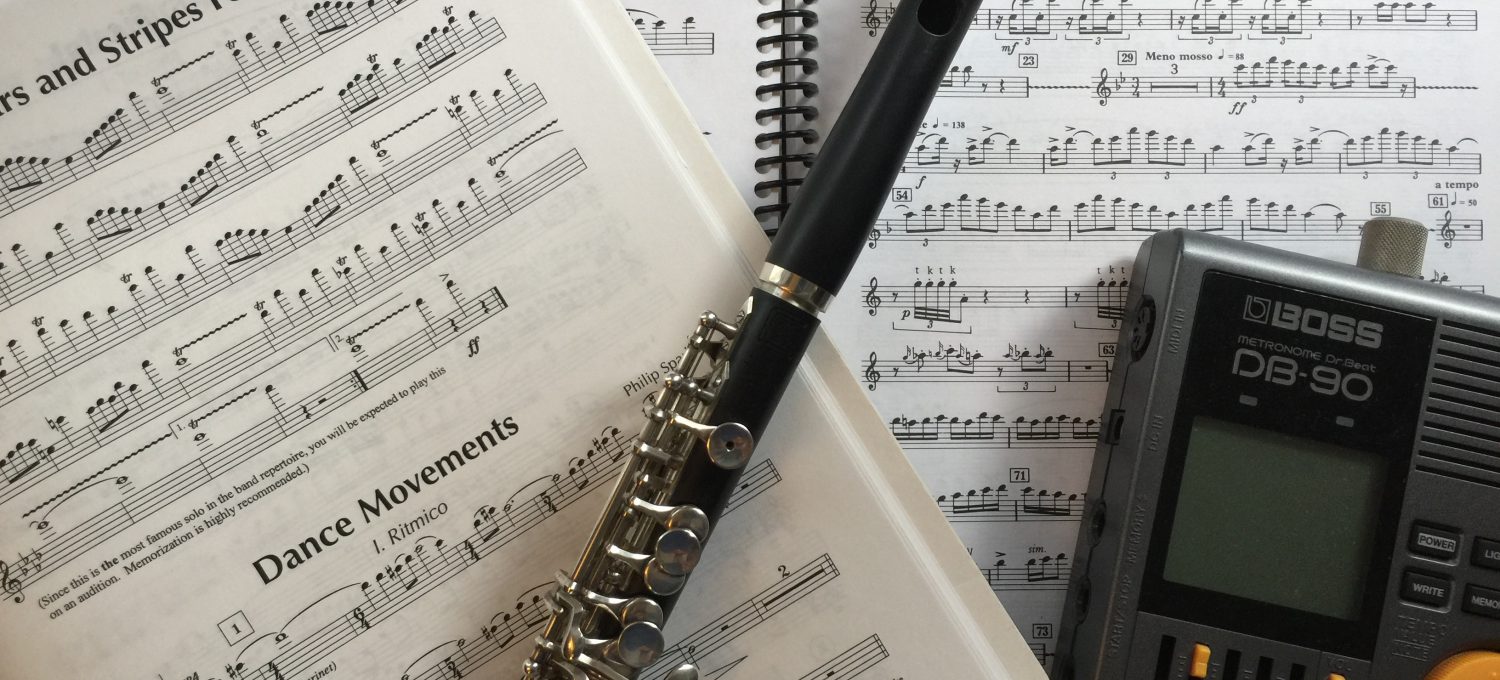It’s that time of year when students start heading back to school. Back to school time also means preparing for ensemble auditions and seat placements. Some auditions require a prepared piece of the performer’s choice while others provide the piece or excerpts a week in advance. It is the latter situation that causes players the most stress, causing common sense and good habits to go out the window in a frantic practice frenzy. These auditions can tax even the most poised players if they give into their fight-or-flight response.
 First and foremost, stay calm! Make a timeline of steps for the audition. This is your battle plan. How many days do you have to hash out the technique? How many days to polish the performance? Seeing this information can help keep the practice focused. Working backwards is the best approach.
First and foremost, stay calm! Make a timeline of steps for the audition. This is your battle plan. How many days do you have to hash out the technique? How many days to polish the performance? Seeing this information can help keep the practice focused. Working backwards is the best approach.
Second, be methodical. Identify problematic or challenging areas and focus on those first. Resist the panic-driven desire to plow through everything faster and faster. Mark the sections that will need the most attention but limit the sections to phrase-sized pieces (8-12 measures).
Third, work micro to macro. Find those challenging sections or phrases and break them into smaller pieces. Work through them one measure at a time, then two, then three. Treat these broken sections like puzzle pieces and slowly build them up by adding surrounding measures. This builds familiarity and context. Slow and steady with occasional and gradual increases in tempo.
Finally, don’t neglect your fundamentals. Warm up and work on tone, intonation, and technique as you would on a normal day.
Again, don’t give in to panic and neglect your normal routine. The fundamental work on intonation, tone, and technique will make your practice more efficient and actually benefit the audition preparation.
Here is an example of a seven-day timeline.
click here to download the .pdf
Day 1 – Play through and identify challenging areas, mark sections to focus on. Initial woodshedding. Micro to macro.
Day 2 – Micro day – Marked sections 2-4 measure pieces, work slowly with a metronome and tuner.
Day 3 – Micro day – 4-8 measures at a time from trouble sections, increase tempo 1-3 clicks at a time.
Day 4 – Micro to macro day – Put the sections in context, build the puzzle phrase by phrase.
Day 5 – Macro day – play through top to bottom for phrasing continuing to increase tempo 1-3 clicks at a time as necessary.
Day 6 – Play through focus on musicality and consistency. Have someone listen or record yourself!
Day 7 – AUDITION DAY – warm-up as usual, run through one time only!
- Make a timeline for audition prep
- Work methodically – slow and steady
- Work micro to macro
- Don’t forget about fundamentals
As a piccolo player, it is exceptionally important to maintain a normal routine and not cram at the last minute. I use the above method to prepare for every performance and audition. The timeline and methodology ensure that I am mentally prepared by giving me deadlines to aim for. Remembering to include daily routine work guarantees that my performance stamina is high and that I am physically ready.

